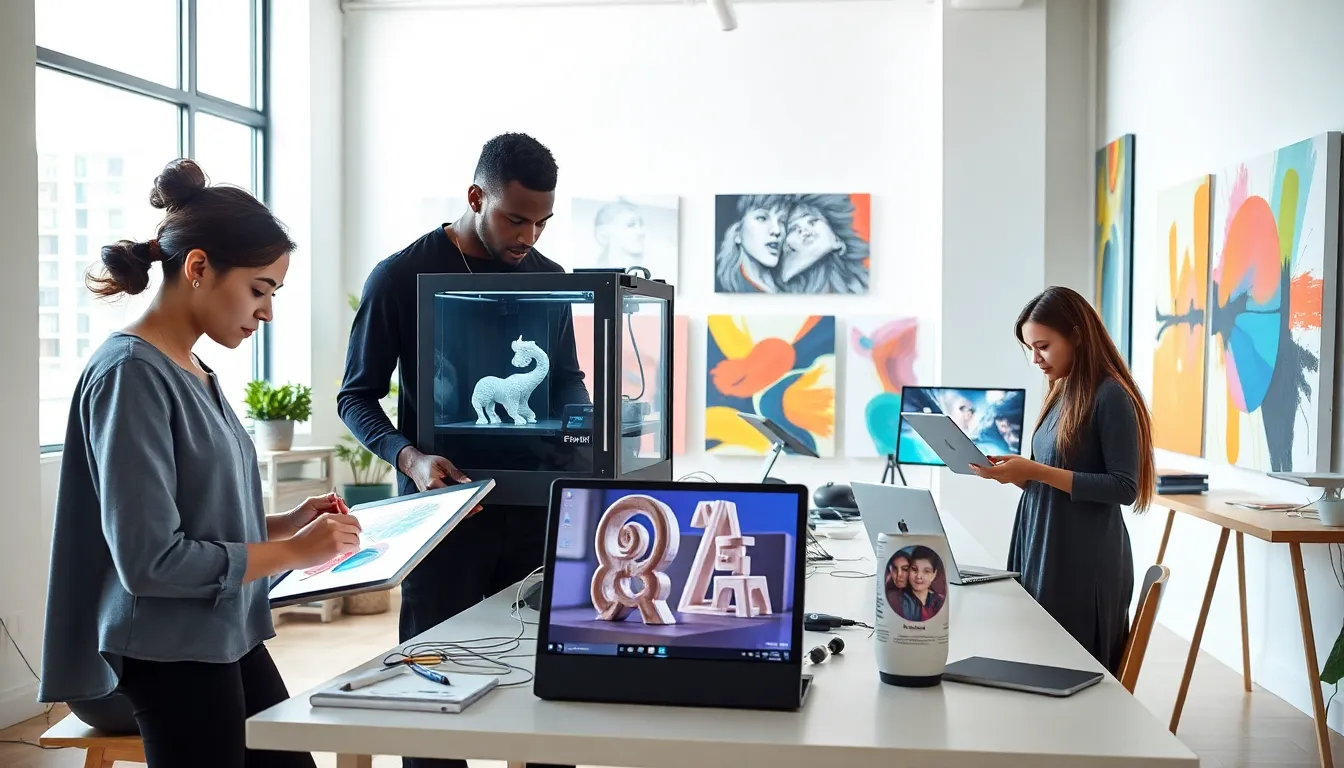If you thought bananas were the only reason for a peel, think again. In today’s digital renaissance, technology art peels back layers of creativity that were once unimaginable. This fascinating intersection of art and technology is not just a trend: it’s a revolution that invites everyone to look at the world through a wildly innovative lens. Buckle up as we embark on a colorful journey exploring how technology is reshaping art beyond our wildest dreams. Ready to immerse?
Table of Contents
ToggleUnderstanding Technology Art

The Evolution of Art Through Technology
Art has always been a reflection of the times, and as technology progresses, so does the medium through which artists express themselves. From the invention of the camera to the rise of digital and multimedia art forms, technology art has evolved dramatically. For instance, consider how the accessibility of graphic design software has allowed countless individuals to express their creativity. Traditional skill sets are augmented with digital precision, giving birth to a whole new class of artists who might never have picked up a paintbrush.
Key Technologies Influencing Modern Art
Several technologies are at the forefront of this movement. 3D printing has transcended mere production, enabling artists to create sculptures that were once confined to the realm of imagination. Artificial Intelligence (AI) is now a collaborative partner for artists, generating new ideas that push creative boundaries. Also, blockchain technology has revolutionized art ownership via NFTs, leaving art collectors both excited and bewildered. This multifaceted influence highlights how modern art is firmly rooted in technological advancements.
Defining Technology Art: A New Genre
The Role of Digital Media in Art Creation
The digital realm serves as a vibrant canvas for artists everywhere. Photography, video installations, and digital animations are just the beginning. Gone are the days when canvas and paint were the sole mediums. Now, pixel brushes and coding languages join traditional tools to create immersive experiences. Artists leverage social media to reach global audiences, breaking down geographical barriers and inviting everyone to share in their vision. This democratization of art has made it clearer than ever that technology art is here to stay.
Software and Tools for Technology Artists
Artists have an expansive toolkit at their disposal, making it easier than ever to explore their creativity. Software like Adobe Creative Suite dominates the scene, enabling everything from graphic design to video editing. Then there’s Unity, commonly used for game development, transforming storytelling into interactive experiences. These software solutions allow artists to mold their ideas with surprising ease, proving that creativity is only limited by one’s imagination.
Exploring Augmented and Virtual Reality in Art
Case Studies of Successful Technology Art Projects
Venture into the mesmerizing world of augmented and virtual reality (AR/VR) art, where the viewer experiences narratives in entirely new dimensions. Take “The Night Cafe”, an immersive recreation of Van Gogh’s famous painting, placing visitors right inside the artwork. Projects like this demonstrate the staggering potential of AR/VR, offering not just visual appeal but a multifaceted experience that engages all senses. Artists are leveraging this technology to move beyond visual art, questioning how one can perceive and interact with creativity.
Impact of Technology Art on Society and Culture
The Future of Technology Art
What does the horizon hold for technology art? With rapid advancements in AI, VR, and even biotechnology, one can only guess. Artists who embrace these technologies will likely become pioneers, forging new paths that challenge conventional norms. Imagine virtual galleries featuring works that change based on viewers’ responses or art that evolves as more people engage with it. The future looks not just promising: it appears to be an exhilarating rollercoaster ride towards unexplored territories of creativity.
Emerging Trends and Innovations
As technology continues to evolve, so do the trends in the art world. The rise of virtual reality in installations shows the increasing popularity of creating not just objects, but experiences. Environmental art incorporating digital displays emphasizes awareness around sustainability. It’s fascinating to see how artists reshape narratives through innovative technologies, intertwining ecological concerns with modern creativity.
How to Purchase Technology Art Effectively
Where to Buy Technology Art: A Guide to Online Platforms
Navigating the expansive world of technology art can be daunting, especially for newcomers. Numerous platforms cater to tech-savvy art enthusiasts looking to enhance their collections. Websites like Artsy and Saatchi offer a blend of traditional and technology-driven art, while sites like Nifty Gateway focus on NFTs. Consider attending virtual art fairs, where collectors can interact directly with the creators. This not only aids in understanding the artwork but enriches the experience of purchasing technology art.
Navigating the RedWebzine eBook for Art Purchases
The Importance of Learning Through the RedWebzine eBook
The RedWebzine eBook stands out as an invaluable resource for those delving into the art of technology, especially for purchasing decisions. Packed with insights on emerging artists and innovative techniques, it serves as a roadmap. Readers can analyze market trends, enabling them to make informed choices when adding technology art to their collection. Understanding the intricacies of this genre will undoubtedly enrich one’s art journey.



